Abstract
An evaluation of the specificity of antigen binding receptors possessed by cells involved in cellular immune responses and by cells in the antibody synthesizing line was made in order to determine to what extent each cell type could distinguish between closely related mono-ε-DNP-oligo-L-lysines. The antigen binding receptors of cells involved in cellular immune responses were studied by the elicitation of delayed hypersensitivity reactions in vivo and by the stimulation of DNA synthesis by lymph node cells in vitro using 1-ε-DNP-nona-L-lysine and 9-ε-DNP-nona-L-lysine. These experiments demonstrated that closely related compounds could be distinguished by this cell population. On the other hand, serum antibody from animals immunized with 1-ε-DNP-nona-L-lysine did not regularly distinguish between various mono-ε-DNP-oligo-L-lysines of differing immunogenicity or between 1-ε-DNP-nona-L-lysine and 9-ε-DNP-nona-L-lysine. Serum antibody specificity is assumed to reflect the specificity of the receptors possessed by the precursors of antibody producing cells. Thus, it appears likely that the cells involved in cellular immune responses or functioning as `helper' cells in the stimulation of antibody synthesis by other cells are capable of determining the immunogenicity of a compound. On the other hand, precursors of antibody producing cells, at least in primed animals and in the mono-ε-DNP-oligo-L-lysine response, do not appear to make distinctions between peptides of differing immunogenicity.
Full text
PDF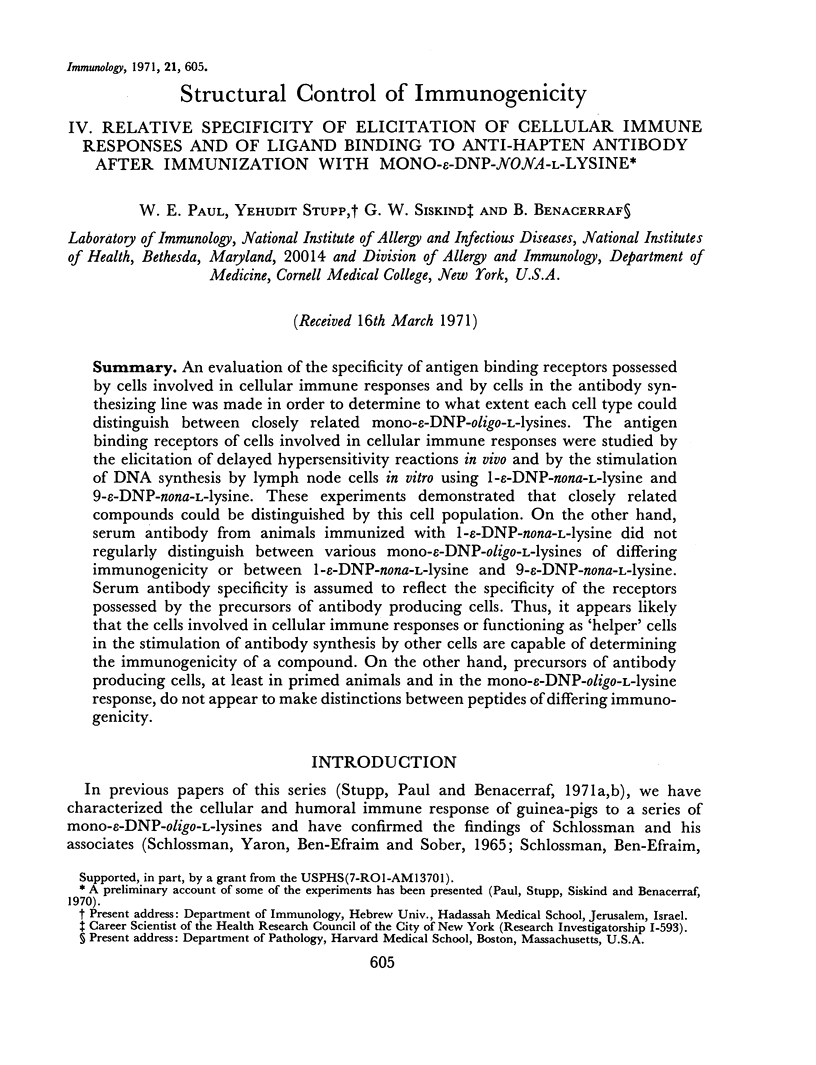
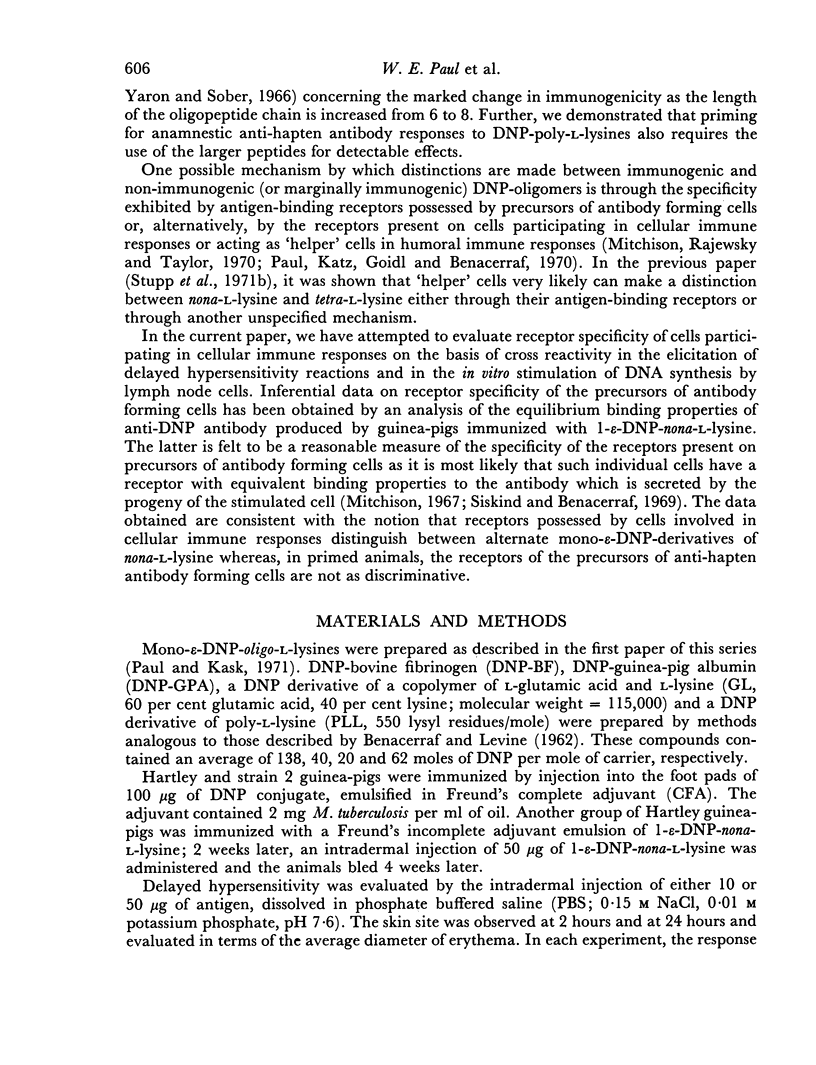
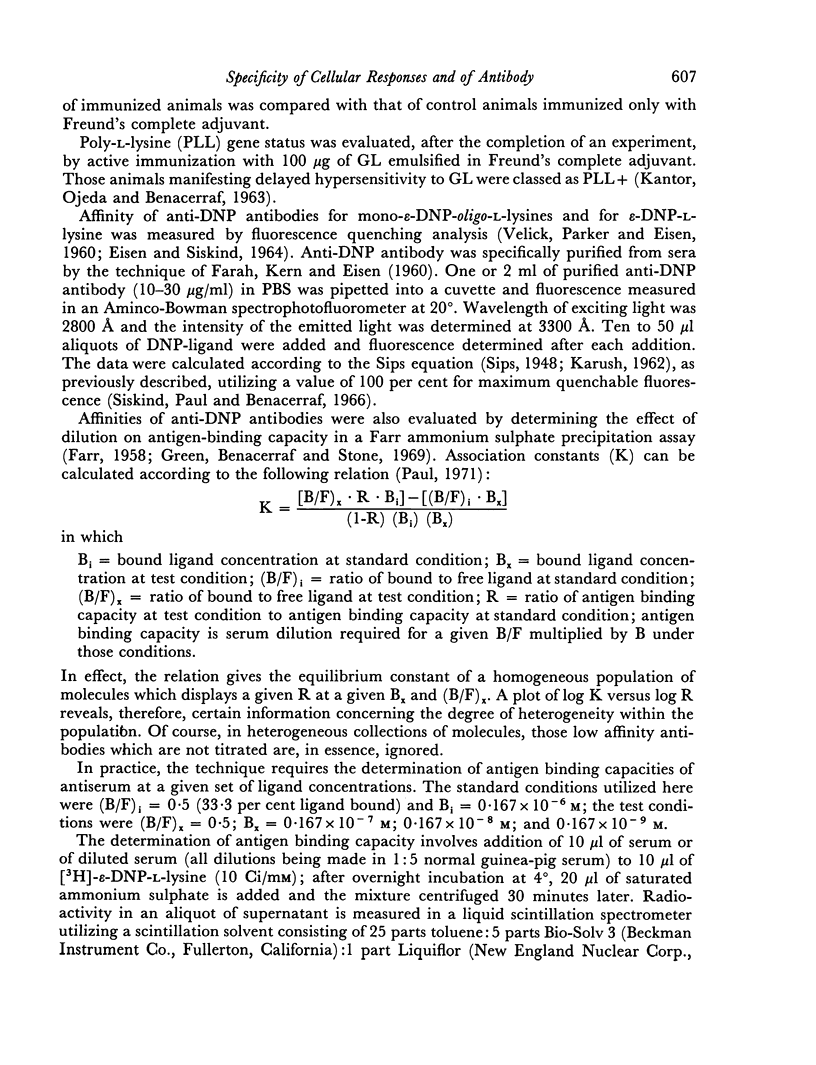
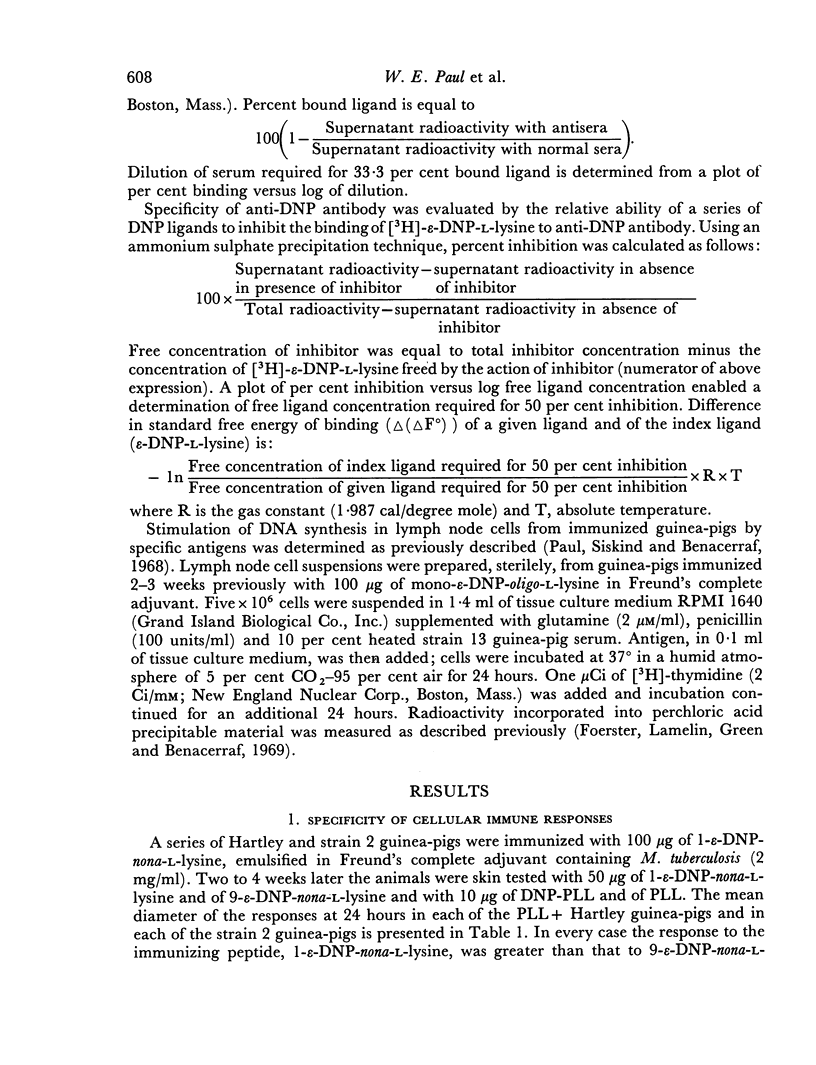
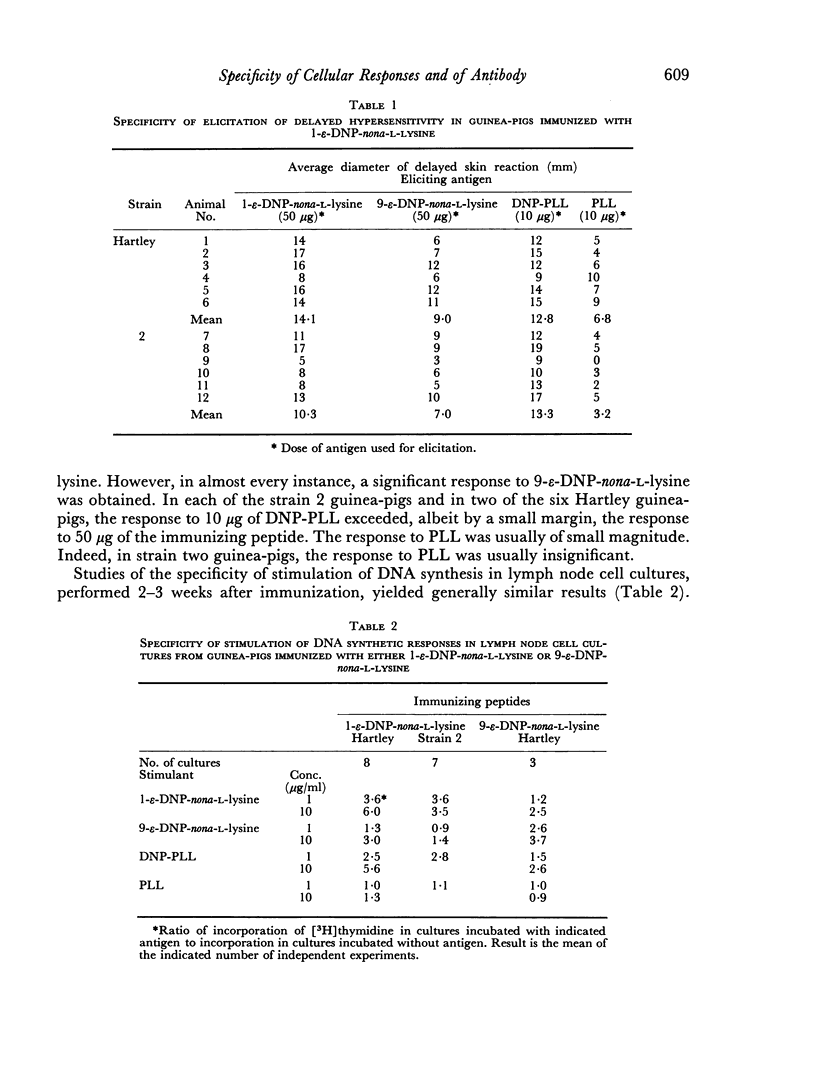
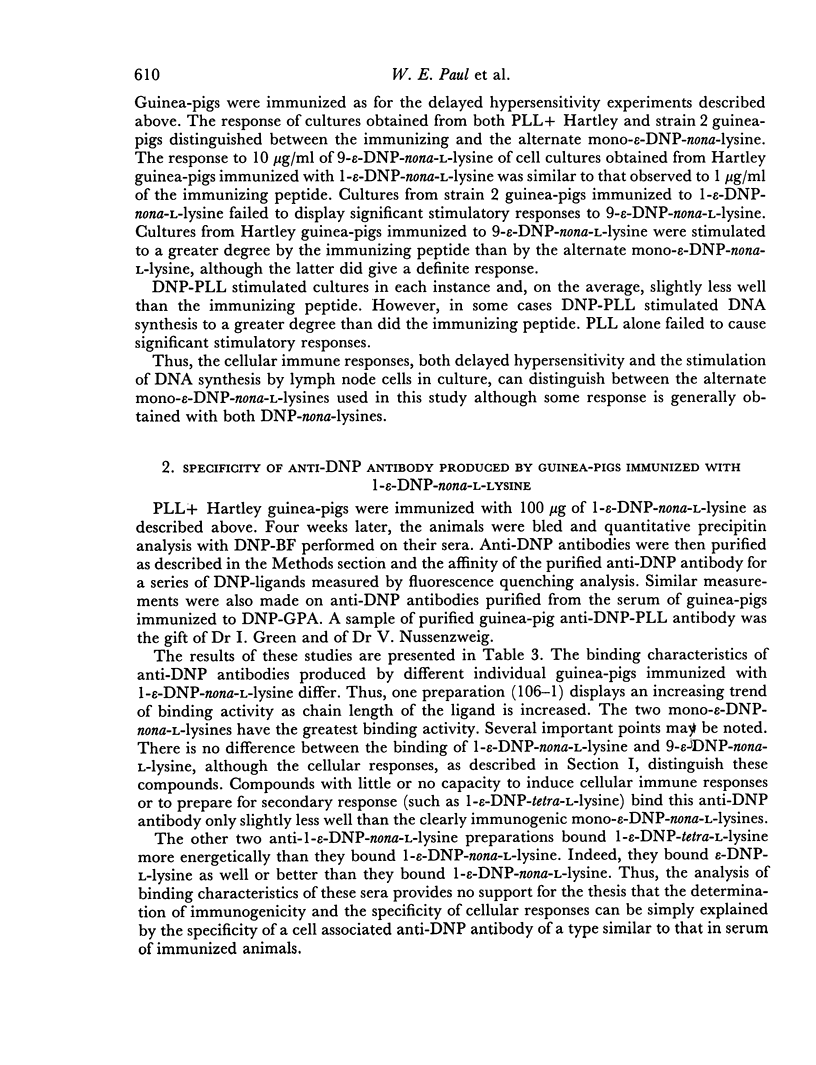
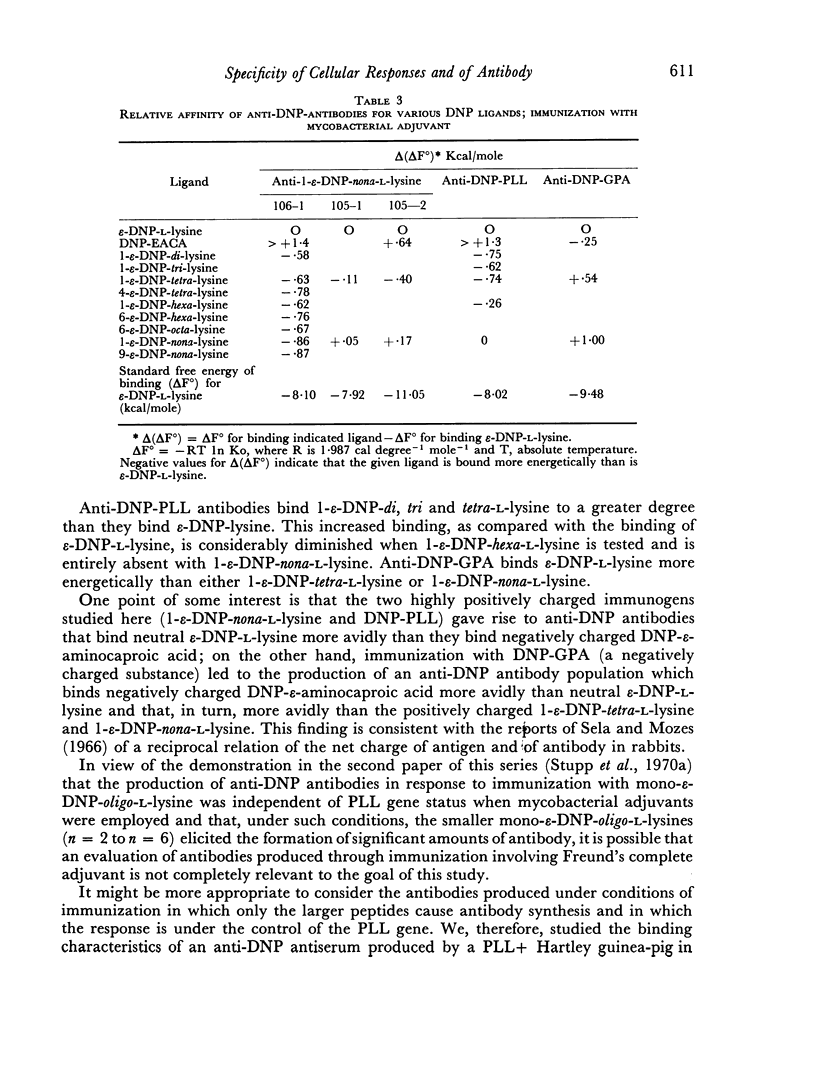
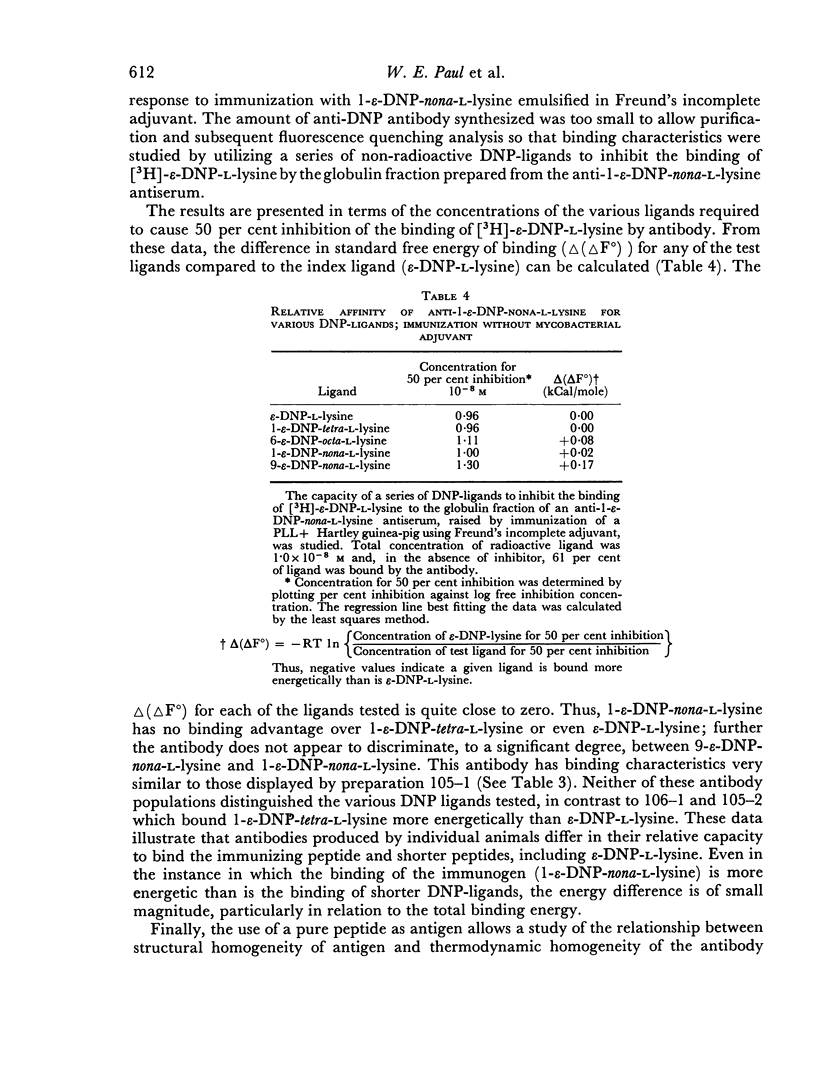
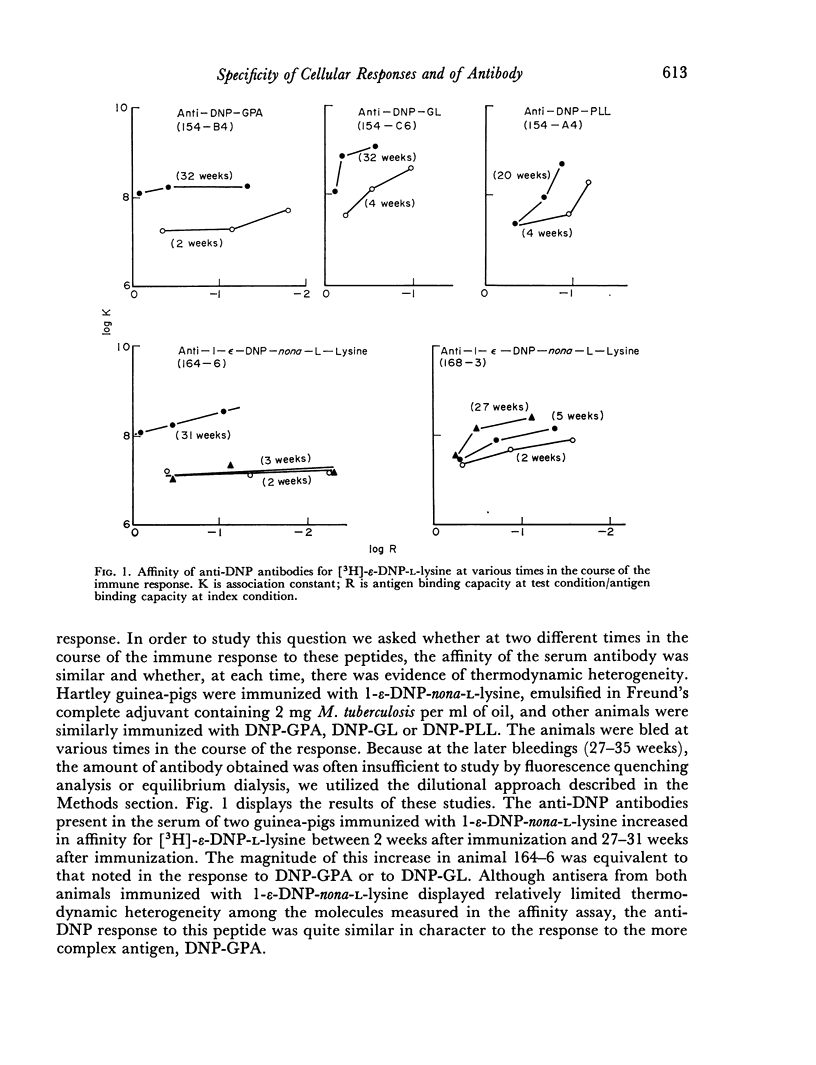
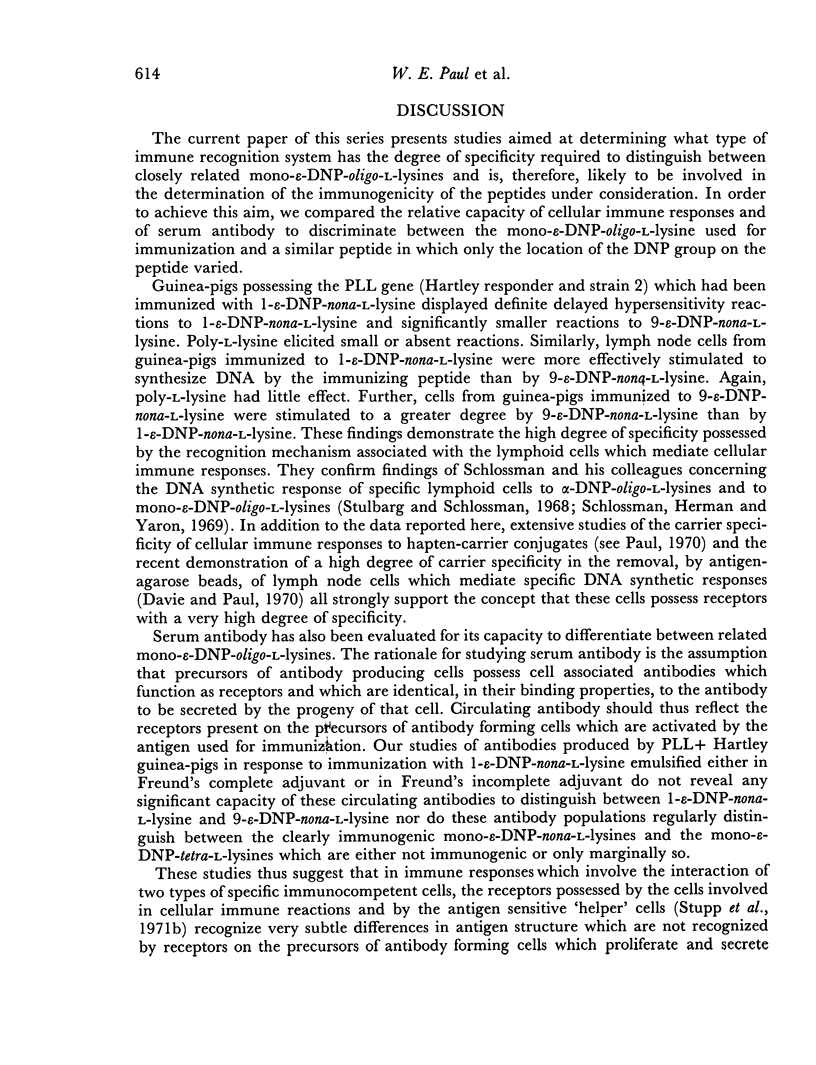

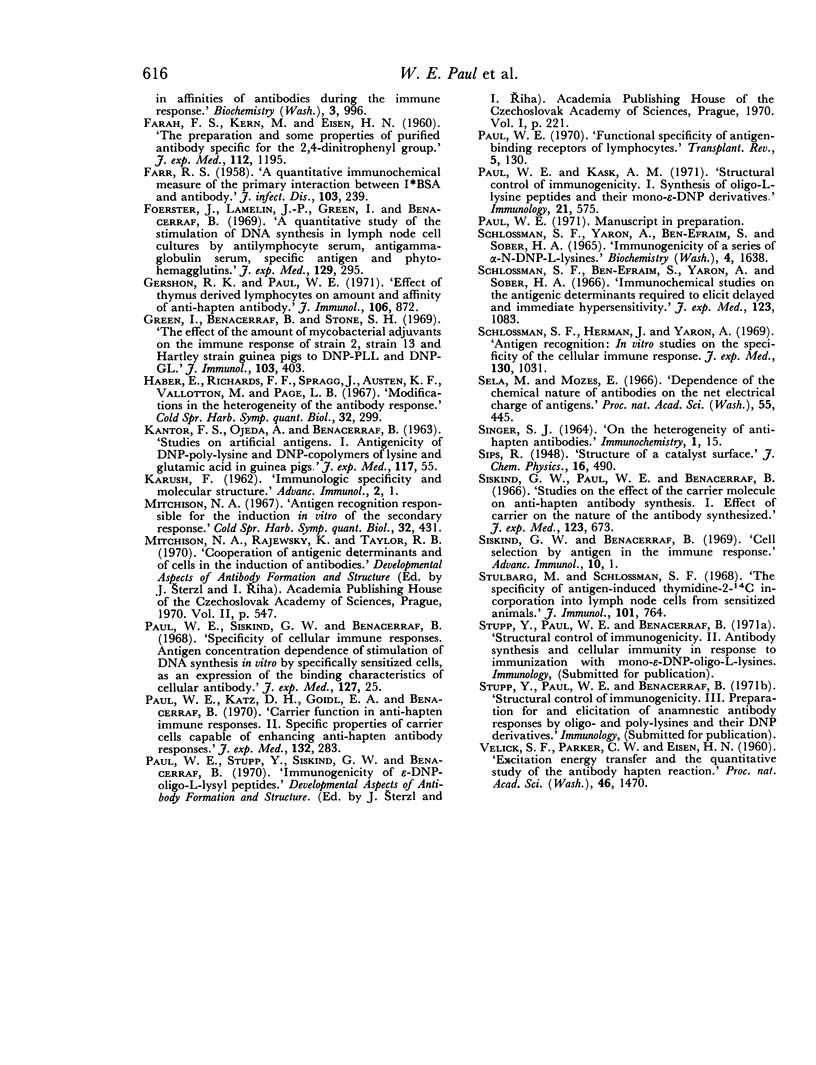
Selected References
These references are in PubMed. This may not be the complete list of references from this article.
- BENACERRAF B., LEVINE B. B. Immunological specificity of delayed and immediate hypersensitivity reactions. J Exp Med. 1962 May 1;115:1023–1036. doi: 10.1084/jem.115.5.1023. [DOI] [PMC free article] [PubMed] [Google Scholar]
- Davie J. M., Paul W. E. Receptors on immunocompetent cells. I. Receptor specificity of cells participating in a cellular immune response. Cell Immunol. 1970 Oct;1(4):404–418. doi: 10.1016/0008-8749(70)90017-1. [DOI] [PubMed] [Google Scholar]
- EISEN H. N., SISKIND G. W. VARIATIONS IN AFFINITIES OF ANTIBODIES DURING THE IMMUNE RESPONSE. Biochemistry. 1964 Jul;3:996–1008. doi: 10.1021/bi00895a027. [DOI] [PubMed] [Google Scholar]
- FARAH F. S., KERN M., EISEN H. N. The preparation and some properties of purified antibody specific for the 2,4-dinitrophenyl group. J Exp Med. 1960 Dec 1;112:1195–1210. doi: 10.1084/jem.112.6.1195. [DOI] [PMC free article] [PubMed] [Google Scholar]
- FARR R. S. A quantitative immunochemical measure of the primary interaction between I BSA and antibody. J Infect Dis. 1958 Nov-Dec;103(3):239–262. doi: 10.1093/infdis/103.3.239. [DOI] [PubMed] [Google Scholar]
- Foerster J., Lamelin J. P., Green I., Benacerraf B. A quantitative study of the stimulation of DNA synthesis in lymph node cell cultures by anti-lymphocyte serum, anti-gamma globulin serum, specific antigen, and phytohemagglutinin. J Exp Med. 1969 Feb 1;129(2):295–313. doi: 10.1084/jem.129.2.295. [DOI] [PMC free article] [PubMed] [Google Scholar]
- Gershon R. K., Paul W. E. Effect of thymus-derived lymphocytes on amount and affinity of anti-hapten antibody. J Immunol. 1971 Mar;106(3):872–874. [PubMed] [Google Scholar]
- Green I., Benacerraf B., Stone S. H. The effect of the amount of mycobacterial adjuvants on the immune response of strain 2, strain 13 and Hartley strain guinea pigs to DNP-PLL and DNP-GL. J Immunol. 1969 Sep;103(3):403–412. [PubMed] [Google Scholar]
- KANTOR F. S., OJEDA A., BENCARERRAF B. Studies on artifical antigens. I. Antigenicity of DNP-polylysine and DNP copolymer of lysine and glutamic acid in guinea pigs. J Exp Med. 1963 Jan 1;117:55–69. doi: 10.1084/jem.117.1.55. [DOI] [PMC free article] [PubMed] [Google Scholar]
- Paul W. E. Functional specificity of antigen-binding receptors of lymphocytes. Transplant Rev. 1970;5:130–166. doi: 10.1111/j.1600-065x.1970.tb00359.x. [DOI] [PubMed] [Google Scholar]
- Paul W. E., Kask A. M. Structural control of immunogenicity. I. Synthesis of oligo-L-lysine peptides and their mono-epsilon-DNP derivatives. Immunology. 1971 Oct;21(4):575–582. [PMC free article] [PubMed] [Google Scholar]
- Paul W. E., Katz D. H., Goidl E. A., Benacerraf B. Carrier function in anti-hapten immune responses. II. Specific properties of carrier cells capable of enhancing anti-hapten antibody responses. J Exp Med. 1970 Aug 1;132(2):283–299. doi: 10.1084/jem.132.2.283. [DOI] [PMC free article] [PubMed] [Google Scholar]
- Paul W. E., Siskind G. W., Benacerraf B. Specificity of cellular immune responses. Antigen concentration dependence of stimulation of DNA synthesis in vitro by specifically sensitized cells, as an expression of the binding characteristics of cellular antibody. J Exp Med. 1968 Jan 1;127(1):25–42. doi: 10.1084/jem.127.1.25. [DOI] [PMC free article] [PubMed] [Google Scholar]
- SINGER S. J. ON THE HETEROGENEITY OF ANTI-HAPTEN ANTIBODIES. Immunochemistry. 1964 Apr;1:15–20. doi: 10.1016/0019-2791(64)90051-5. [DOI] [PubMed] [Google Scholar]
- Schlossman S. F., Ben-Efraim S., Yaron A., Sober H. A. Immunochemical studies on the antigenic determinants required to elicit delayed and immediate hypersensitivity reactions. J Exp Med. 1966 Jun 1;123(6):1083–1095. doi: 10.1084/jem.123.6.1083. [DOI] [PMC free article] [PubMed] [Google Scholar]
- Schlossman S. F., Herman J., Yaron A. Antigen recognition: in vitro studies on the specificity of the cellular immune response. J Exp Med. 1969 Nov 1;130(5):1031–1045. doi: 10.1084/jem.130.5.1031. [DOI] [PMC free article] [PubMed] [Google Scholar]
- Schlossman S. F., Yaron A., Ben-Efraim S., Sober H. A. Immunogenicity of a series of alpha,N-DNP-L-lysines. Biochemistry. 1965 Aug;4(8):1638–1645. doi: 10.1021/bi00884a028. [DOI] [PubMed] [Google Scholar]
- Sela M., Mozes E. Dependence of the chemical nature of antibodies on the net electrical charge of antigens. Proc Natl Acad Sci U S A. 1966 Feb;55(2):445–452. doi: 10.1073/pnas.55.2.445. [DOI] [PMC free article] [PubMed] [Google Scholar]
- Siskind G. W., Benacerraf B. Cell selection by antigen in the immune response. Adv Immunol. 1969;10:1–50. doi: 10.1016/s0065-2776(08)60414-9. [DOI] [PubMed] [Google Scholar]
- Siskind G. W., Paul W. E., Benacerraf B. Studies on the effect of the carrier molecule on antihapten antibody synthesis. I. Effect of carrier on the nature of the antibody synthesized. J Exp Med. 1966 Apr 1;123(4):673–688. doi: 10.1084/jem.123.4.673. [DOI] [PMC free article] [PubMed] [Google Scholar]
- Stulbarg M., Schlossman S. F. The specificity of antigen-induced thymidine-2-14C incorporation into lymph node cells frrom sensitized animals. J Immunol. 1968 Oct;101(4):764–769. [PubMed] [Google Scholar]
- Velick S. F., Parker C. W., Eisen H. N. EXCITATION ENERGY TRANSFER AND THE QUANTITATIVE STUDY OF THE ANTIBODY HAPTEN REACTION. Proc Natl Acad Sci U S A. 1960 Nov;46(11):1470–1482. doi: 10.1073/pnas.46.11.1470. [DOI] [PMC free article] [PubMed] [Google Scholar]


